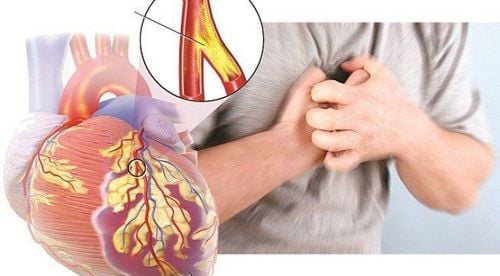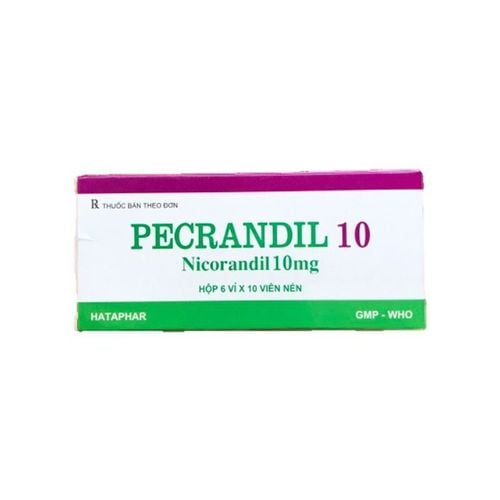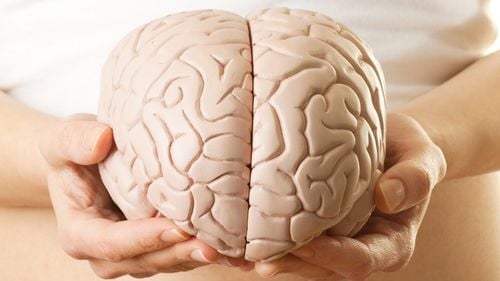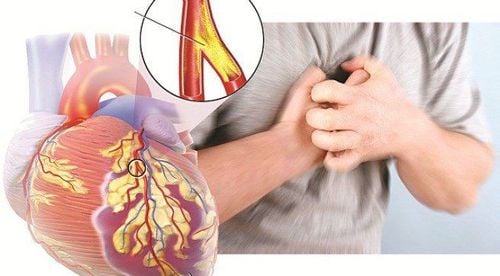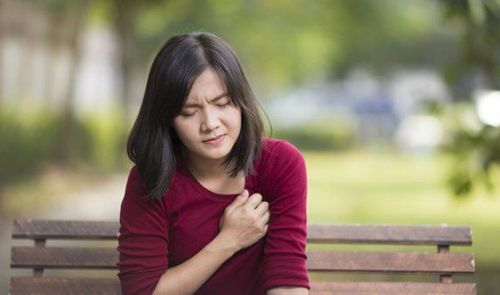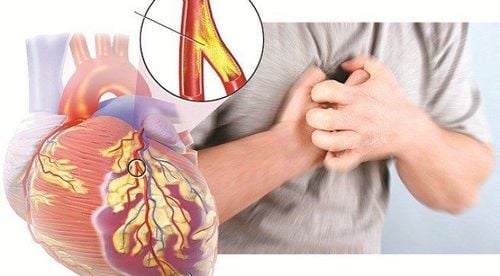This is an automatically translated article.
During sports practice, states may occur such as: Fainting, dizziness, shortness of breath, nausea... this is due to anaphylaxis. To manage a heart attack while exercising, the article will provide some useful information.
1. Heart Shock
Cardiogenic shock occurs when the heart cannot supply enough blood to the vital organs of the body. As a result of the heart's inability to pump enough nutrients to the body, blood pressure drops and organs can begin to fail. Cardiogenic shock is not common, but when it does, it is a serious medical emergency.
Almost no one can survive a heart attack in the past. Today, half of people with cardiogenic shock survive with prompt treatment. This is possible because of improved treatments and faster recognition of symptoms.
2. Signs and symptoms of cardiogenic shock
Symptoms of cardiogenic shock can appear very quickly. Symptoms may include: Confusion and anxiety; sweating and cold extremities, such as fingers and toes; fast but weak heart rate; low or no urine output; tired; sudden shortness of breath; fainting or dizziness; coma, if measures are not taken in time to cut off the shock; chest pain, if there was a previous heart attack.
If you experience one of the above signs or symptoms, immediately go to the emergency room because the earlier it is detected, the better the treatment outcome.
3. Causes of cardiogenic shock
Cardiogenic shock is often the result of a heart attack. During a heart attack, the flow of blood through the arteries is limited or completely blocked. This restriction can lead to cardiogenic shock. Other possible causes of cardiogenic shock include:
Sudden blockage of blood vessels in the lungs (pulmonary embolism); Accumulation of fluid around the heart, reducing its ability to fill (pericardial tamponade); Damage to the valve, allowing blood to back up (sudden valvular regurgitation) Rupture of the heart wall due to increased pressure; The inability of the heart muscle to function normally or in some cases; Arrhythmia in which the lower chambers vibrate or vibrate (ventricular fibrillation) Arrhythmia in which the ventricles beat too quickly (ventricular tachycardia); Overdose can also affect the heart's ability to pump blood and can lead to cardiogenic shock.

Sốc tim thường là hậu quả của một cơn đau tim
4. Some risk factors for cardiogenic shock during exercise
Risk factors for cardiogenic shock include:
Previous history of heart attack; Plaque buildup in the coronary arteries (the arteries that supply blood to the heart); Long-term valvular heart disease (disease affecting the heart valves). In people with pre-existing heart failure, the infection can also cause what is called “mixed” shock – cardiogenic plus septic shock.
5. Diagnosis of cardiogenic shock during exercise
If you see someone having a heart attack or believe you may be having a heart attack, get medical help right away. Early medical care can prevent cardiogenic shock and reduce damage to the heart. Cardiogenic shock can be fatal if left untreated.
To diagnose cardiogenic shock, your doctor will do a general physical exam. The test will measure your pulse and blood pressure. The doctor may order the following tests to confirm the diagnosis:
Blood pressure measurement: This will show low values in the presence of cardiogenic shock. Blood tests: Blood tests can show whether heart tissue has been severely damaged. They can also tell if there is a decrease in the oxygen value. If cardiogenic shock is caused by a heart attack, there will be more enzymes involved in heart damage and less oxygen than normal in your blood.
Electrocardiogram (ECG): This procedure shows the electrical activity of the heart. The test may show an irregular heartbeat (arrhythmia), such as ventricular tachycardia or ventricular fibrillation. These arrhythmias can be the cause of cardiogenic shock. The electrocardiogram may also show a tachycardia. Echocardiogram: This test provides images that show the blood flow of the heart by looking at the structure and functioning of the heart. It can show an immobile part of your heart, such as during a heart attack, or it can indicate an abnormality with one of your heart valves or an overall weakening of the heart muscle.
Swan-Ganz Catheter: This is a specialized catheter inserted into the heart to measure pressures that reflect its pumping function. This should only be done by a trained cardiologist or cardiologist.
6. Treatment options for cardiogenic shock during exercise
To treat cardiogenic shock, the doctor must find and treat the cause of the shock. If the cause is a heart attack, your doctor may give you oxygen and then thread a catheter into the artery supplying the heart muscle to clear the blockage. If an arrhythmia is the underlying cause, your doctor may try to correct the arrhythmia with electric shocks. Electric shock is also known as defibrillation or electric shock.
In addition, the doctor may also give medication and remove fluid to improve blood pressure and heart function.
7. Complications of cardiogenic shock
If cardiogenic shock is severe or left untreated for too long, your organs will not receive an adequate supply of oxygen through the blood. This can lead to temporary or permanent organ damage. For example, cardiogenic shock can lead to: brain damage; liver or kidney failure; stroke ; heart attack. Permanent organ damage can lead to death.

Chẩn đoán sốc tim khi tập thể thao rất quan trọng
8. What can be done to prevent cardiogenic shock during exercise
Preventing the occurrence of its root causes is the key to preventing cardiogenic shock. This includes prevention and treatment of: High blood pressure; smoke; fat; high cholesterol.
Here are some things you can do to prevent cardiogenic shock:
Seek immediate medical attention if you have any symptoms that may reflect a heart attack. If you have a history of heart attack, your doctor may prescribe medications that keep your heart healthy or help it recover from a heart attack. If you have high blood pressure or a history of heart attack, work with your doctor to control your blood pressure. In short, exercise regularly to control your weight. However, if you have signs of a heart attack while exercising, you should not apply the exercises you are using. Instead, eat a healthy diet to help control cholesterol levels and get regular heart health check-ups at a reputable medical facility. Currently, Cardiovascular Center - Vinmec International General Hospital is one of the leading centers in the country for examination, diagnosis, screening and treatment of cardiovascular diseases. With the convergence of a team of experienced and reputable experts in the field of surgery, internal medicine, interventional cardiac catheterization and the application of advanced techniques in the diagnosis and treatment of diseases. Cardiovascular management, along with a system of modern equipment, on par with the most prestigious hospitals in the world such as: 3 Tesla MRI machine (Siemens), 640 CT machine (Toshiba), other equipment Advanced endoscope EVIS EXERA III (Olympus Japan), Avace high-end anesthesia system, Hybrid operating room according to international standards... The Cardiovascular Center at Vinmec International General Hospital has achieved many successes. work and gain the trust of a large number of patients.
Please dial HOTLINE for more information or register for an appointment HERE. Download MyVinmec app to make appointments faster and to manage your bookings easily.
References: health.harvard.edu, ncbi.nlm.nih.gov, healthline.com



